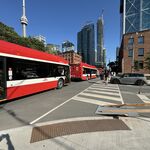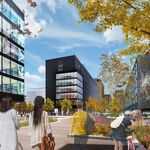mpd618
Active Member
Sure, and they'll be replaced by new people driving.
Congestion in Toronto isn't going anywhere. Perhaps a 3 or 4 year reprieve as immigration ramps up again, but long term this plan is strictly about economic growth.
I mostly agree with this point - if you get people off the roads, others will take their place. But I think at the margin of extreme, paralyzing congestion, this may not hold up when there are actually good transit options. People will still clog up the roads to take the place of others, but the average tolerable congestion level will be reduced by really competitive transit.




